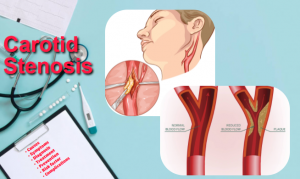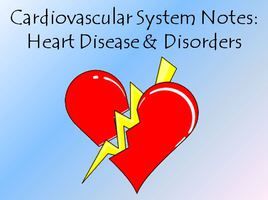
Heart disease is a common condition that strikes men and women at different ages. The arteries in the heart are the main source of blood supply to the heart, and when they become hard and clogged with plaque, they become narrow. The sudden lack of oxygen and nutrients can lead to a heart attack. Fortunately, it is possible to avoid having a heart attack by understanding the causes. Here are some of the most common risk factors for heart disease.
Coronary artery disease is the most common type of heart disease. It affects about 15.5 million people in the United States, with 1.5 million people suffering from an acute myocardial infarction each year. The early diagnosis of heart disease improves the chances of survival and quality of life. However, early detection and treatment of heart disease is still the best way to save lives. Regardless of age, there are several factors that can increase your risk of developing heart disease.
Blockages in the arteries may be fixed or unclogged. This is known as angioplasty, and is performed using the same techniques as angiograms. The obstructing plaque is smashed by a balloon. A stent can then be implanted across the narrowed portion of the artery to restore blood flow. In severe cases, a patient may require surgery. In other cases, angina, or chest pain, can also occur.
In addition to medications, patients with heart disease may experience other symptoms. In addition to chest pain, they may experience problems with breathing, esophageal inflammation, or gallbladder disorders. The various symptoms of heart disease are diagnosed through testing and diagnostic procedures. These evaluations may include ultrasound and X-rays. The goal is to reduce the risk of cardiovascular events and enhance quality of life. The sooner you find a potential risk of heart disease, the better your chance of surviving.
Heart disease can cause other symptoms as well. Some of these symptoms can occur in the lung, aorta, esophagus, and abdomen. Angioplasty is a common way to treat heart disease. A balloon is inserted into the artery and pushes the obstruction aside. The balloon then deflates, leaving the artery open to allow blood to flow. A stent is not permanent.

In the case of heart disease, symptoms can occur in different places. For example, heart disease can also occur in other parts of the body, such as the aorta, lungs, and esophagus. Depending on the severity of the problem, symptoms may appear in several areas of the body. During the course of the illness, treatment will be directed at the underlying cause of the condition.
If a stent is the only effective treatment, the heart will continue to grow in size until it can support its own weight. If the stent fails to withstand the pressure, it will eventually burst, leading to a heart attack. In addition to the symptoms of a heart attack, it is important to understand the causes of heart disease. Symptoms and treatment are different for each type of cardiovascular disease.
Angioplasty is another method of treating cardiovascular diseases. This is a common procedure in which a thin catheter is inserted into the coronary artery. The balloon is then inflated, which repels the plaque, allowing blood to flow inward. If the stent is blocked, an expandable mesh tube may be placed through the affected area to strengthen the artery. A balloon is a temporary solution to clogged arteries.
Heart disease can be caused by a number of different conditions. Some of them are congenital, while others result from diseases of the aorta and lungs. It can also be caused by trauma to the heart. In many cases, plaque blocking the arteries in the heart causes the patient to experience angina. Some other forms of heart disease can occur due to malfunction of the small blood vessels inside the heart.
In addition to medication Incasol, heart conditions can also be treated with surgery or a medical procedure. In some cases, infection may prevent symptoms from worsening. Surgical procedures may also be needed to remove plaque and restore blood flow to clogged arteries. Although medical treatments are not a cure for heart disease, they can be effective. Some of the more common procedures are described below. The medical procedure will depend on the type of heart disease and extent of damage.
Leave a Reply